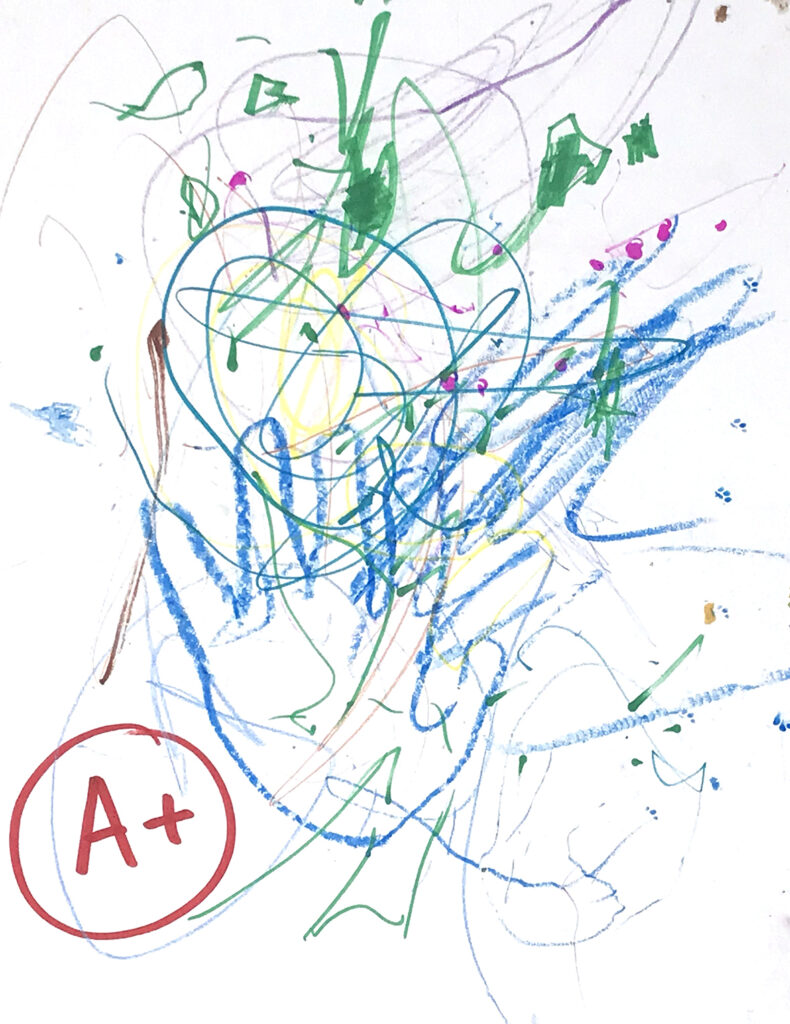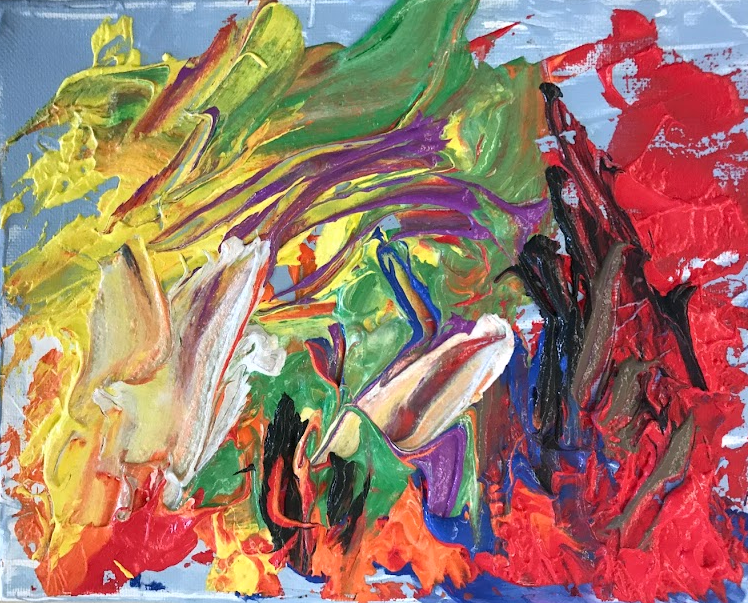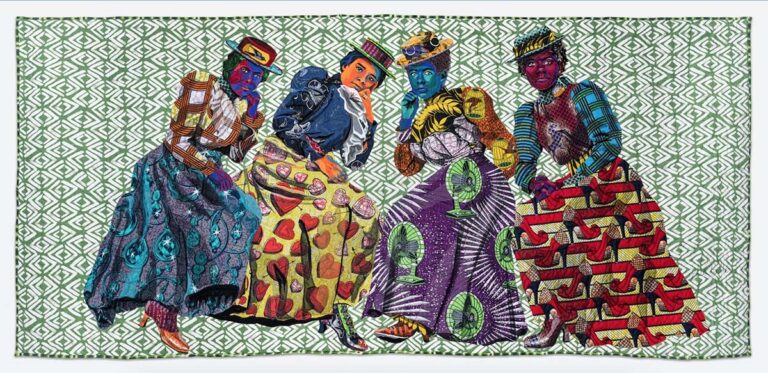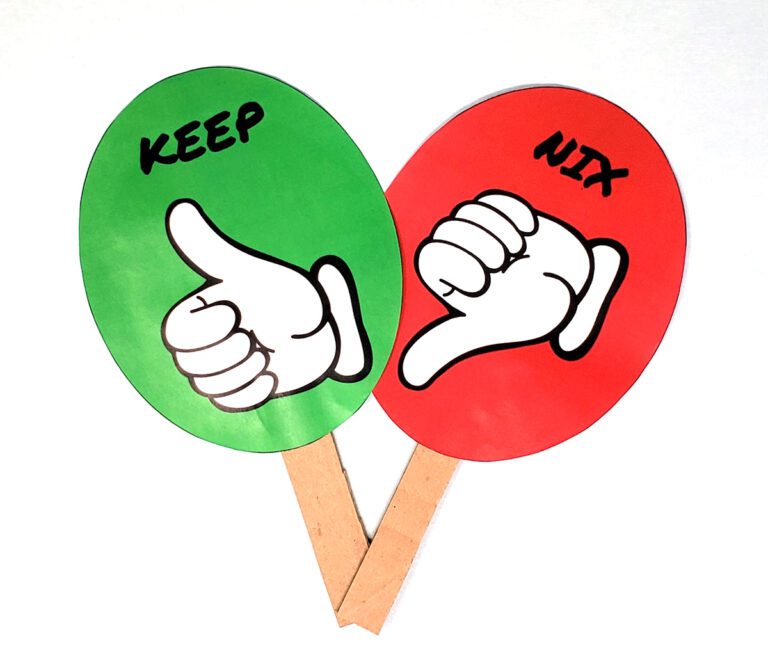Students come to your art room from many diverse backgrounds. They have different home lives, cultures, religions, and, of course, learning preferences. Along with those variations, you must also determine how to motivate each student. Motivation can be a tricky thing. After all, what works for one student may not work for another. For example, one student may need an external reward for their efforts. Another may genuinely enjoy drawing and be intrinsically satisfied. Then, we have students who care most about their grades and will do almost anything to earn that “A” or “B.” So, how do we motivate students to care about their creative learning outside of grades?
Here are six tips to help your students think beyond letter grades.

1. Know their level of engagement.
Student engagement levels depend significantly upon the teacher. You have a lot of control over how involved students are in your studio. The Student Engagement Continuum names five categories to reflect how occupied students are. Use them to determine if kids are complying with creating your project because they love it or just want to follow the rules.
The five categories are:
- Authentic Engagement
This is the highest level, where student artists see the activity as personally meaningful. As such, they will push through challenges to complete their work well. - Strategic Compliance
Students see the activity as important, but grades, approval, and status are the motivators. - Ritual Compliance
Students participate in the activity but focus on only meeting the bare minimum. Their primary motivation is to avoid bad grades, confrontation, or conflict. - Retreatism
There is minimal to no participation at this level. Students withdraw and often think they are incapable, do not see the value, or worse: both. - Rebellion
This is the lowest level of engagement. Students refuse to do the work, and their behaviors disrupt others.
2. Do not formally grade everything.
Not everything needs a grade. Remember: assessments come in all forms. Many formative assessments, meaning those done during the learning process, do not need to be officially graded. Quickly scan through the results and use the data to inform your teaching moving forward. Check out this article for 20 Quick Formative Assessments You Can Use TODAY.
3. Allow room for error.
Everybody makes mistakes, even students. Provide specific feedback with grace and kindness when you do assign a formal grade.
4. Modify, accommodate, and differentiate.
Do not be afraid to change the goal of an assignment if a student is struggling. You may need to break it down into smaller goals to motivate students with more frequent and feasible wins. Likewise, accommodate different types of learners and differentiate your lessons to match them. Modifications and accommodations such as this may help all students and may be a legal requirement for students with IEPs, 504s, or other special educational needs. The objective can often remain the same, but you can be flexible with how your students get there.
5. Add in cross-curricular connections.
Connecting with other content areas can broaden a student’s scope. It can also cast a wider net of interest for students. Here is an introductory article on how to build cross-curricular connections in the art room to get you started.
6. Give consistent feedback.
Specific and timely verbal or written feedback matters to every student. Provide it frequently and as students are working versus at the end when it is time to grade a final project. Likewise, ask students for feedback on your teaching practice and curriculum. Their comments can shed light on the how or why behind disengagement.
To find more strategies for giving strong feedback, take a look at these three articles:
- 3 Keys to Effective Art Room Feedback
- The Art of Giving Meaningful Student Feedback
- How to Generate Student Feedback to Improve Your Classes

These tips are great for encouraging students to focus on a piece of knowledge they find intriguing or a technique they love. It shifts the endgame from only thinking about earning a grade to knowing a skill, caring about their learning, and understanding how to make improvements. You can further advance this process by intentionally crafting your lessons with motivation in mind. As educators, we know grades can give students more anxiety or create avoidance of certain tasks. Soften the focus and take off the pressure. You can help kids hone in on what truly matters in your room: learning through creativity, imagination, and crafting meaningful artwork they can enjoy.
Here are five options for instructional design that encourage internal motivation and shift the focus away from final letter grades.
1. Open-Ended
Choose a project that does not have one “right” answer but is open for interpretation. A project introducing a heavy skill like perspective or shading may not be the best option. Instead, try collage or another medium providing many routes to render a subject matter.
2. Choice-Based
Choice in art class can come in many forms, including subject, media, or technique. Giving students options can make them feel more in control and makes the creative process more enjoyable. Check out the Transitioning from Traditional to Choice Curriculum Pack in PRO Learning for more tips.
3. Inquiry-Driven
This is where your students take the driver’s seat for the lesson with you as the guide. Students thrive with autonomy and environments that prompt curiosity. You can enlist their help in developing questions and setting the room up.
4. Collaborative
Let students work together on an art piece. They can build a sculpture, draw large-scale, or even paint a mural. Working with their partner or small group has the added benefit of tapping into their social skills. The Pack, Collaboration in the Art Room in PRO Learning has best practices and activities to get you started.
Click on these three articles to explore more ways to incorporate collaboration in your art room:
- 4 Ways to Foster Authentic Collaboration in the Art Room
- How Student-Directed Collaboration Can Benefit Your Students
- 4 Ways to Incorporate Collaboration in the Classroom
5. Process-Oriented
This approach focuses less on a final product and more on the experience of making a piece of art. Artists who exemplify this are Jackson Pollock and Marcel Duchamp. Zeroing in on the process of artmaking with lots of formative assessments can take the pressure off of producing one huge artwork at the end. Consider process portfolios or other ways to document the steps students take to achieve the objective.

Art educators know the value of making a work of art. Grades are just a formalized method of communicating a student’s skills or mastery level in a simplified, systematic way. In fact, there is more merit and value in kids grading themselves than in someone else giving them a grade. Other important factors in a student’s learning can include teacher efficacy, classroom discussions, scaffolding, and integrating prior knowledge. Hence, grades in and of themselves do not carry a lot of weight, yet they have immense power to influence a student’s mind and motivation. By trying some of these ideas, coming up with your own, and shifting the focus away from letter grades, you can create a welcoming classroom environment where risk is acceptable and students learn from mistakes.
More Resources:
As progressive thinkers often do, we like to imagine other worlds or the impossible becoming possible, such as wondering how a classroom might look without grades. Wonder no more! Read the articles below. Maybe these avant-garde teaching approaches will inspire you to make changes, abolish your grading system entirely, or at least think about grades differently.
- I Don’t Like Grading, and, Uh, I Don’t Think I’m Gonna Grade Anymore
- What Is It Like to Teach Without Grades?
Are your assessment systems currently working well in your classroom?
Which grading procedures or practices would you consider changing?
Magazine articles and podcasts are opinions of professional education contributors and do not necessarily represent the position of the Art of Education University (AOEU) or its academic offerings. Contributors use terms in the way they are most often talked about in the scope of their educational experiences.





